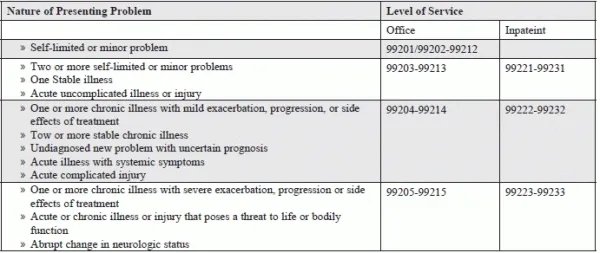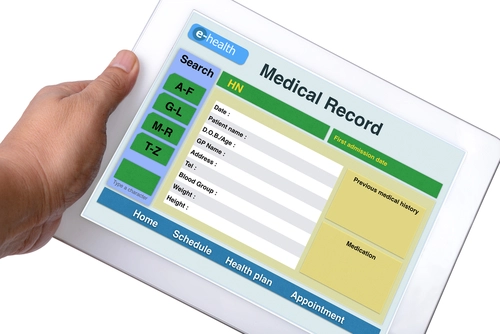Clear Up MDM vs. Medical Necessity Confusion or Face Denials
Make sure your ob-gyn knows what he is signing when submitting claims. Justifying high-level E/M codes, like 99215 (Office or other outpatient visit for the evaluation and management of an established patient, which requires at least 2 of these 3 key components: a comprehensive history; a comprehensive examination; and medical decision making of high complexity …), depends on more than just history, examination, and medical decision making. If your ob-gyn doesn’t document solid medical necessity for the encounter, you can’t report a high-level code, regardless of how sick the patient is or how complicated the case. Review these expert tips to ensure you understand what medical necessity really is and can explain to your ob-gyns why complicated cases don’t always mean high codes. Get to Know the Definition The first key to supporting your coding is understanding what medical necessity really is. Why it matters: On the back of the CMS-1500 or the electronic equivalent, your provider is attesting that “I certify that the services shown on this form were medically indicated and necessary for the health of the patient.” If your coding doesn’t reflect this, your provider could wind up in trouble with Medicare and perhaps your other payers, too. “Remember [your provider] has signed on the front of that form that he agrees with these statements,” explains Kim Garner-Huey, MJ, CHC, CPC, CCS-P, PCS, CPCO, an independent coding and reimbursement consultant from Birmingham, Ala. in her audio conference “Medical Necessity: Defining and Documenting to Support Billing,” sponsored by The Coding Institute affiliate AudioEducator.com. Official wording: According to the American Medical Association’s (AMA’s) 2011 report to the Institute of Medicine’s Committee on Determination of Essential Health Benefits, the AMA defines medical necessity as “Health care services or products that a prudent physician would provide to a patient for the purpose of preventing, diagnosing or treating an illness, injury, disease or its symptoms in a manner that is: (a) in accordance with generally accepted standards of medical practice; (b) clinically appropriate in terms of type, frequency, extent, site, and duration; and (c) not primarily for the economic benefit of the health plans and purchasers or for the convenience of the patient, treating physician, or other health care provider.” Medicare defines medical necessity in the Social Security Act (Title XVIII of the Social Security Act, Section 1862 [a] [1] [a]) as follows: “No payment may be made under Part A or Part B for expenses incurred for items or services which are not reasonable and necessary for the diagnosis or treatment of illness or injury or to improve the functioning of a malformed body member.” Check Your Payers’ Policies Your payers and providers may not always agree upon what is medically necessary. If a provider performs a service, he is doing it out of his judgment that it is medically necessary to treat the patient. However, the patient may get an explanation of benefits from her insurance company stating the service provided was not medically necessary, however. “If we all understand, at least on the physician and provider side ... the basis of it to begin with, we can head off some of those issues, as well as get paid appropriately for the services we’re providing and make sure our documentation supports that,” Huey says. There are two possibilities when you receive a denial based on medical necessity: 1. Covered, but not medically necessary in this case — Your provider may perform an E/M (or other) service, that the payer normally covers, but for some reason the payer does not feel the encounter is medically necessary for the claim you are submitting. These are the denials you should appeal, using your provider’s documentation. 2. Not covered, regardless of provider’s determination of medical necessity — There are some services for which your payer may never reimburse you, regardless of your physician’s determination that the encounter was medically necessary for that patient at that time. Focus on the E/M Impact With electronic medical records (EMRs) becoming more commonplace, you may see that your provider’s documentation is more detailed and his levels of history and examination seem higher than in the past. That means you need to be careful coding services, such as established patient visits, that only require two out of three key components for a code level. Your payer can easily determine if your physician rendered an E/M service when you bill for it, but determining whether medical necessity supports the level of service you coded is the next step. A payer can make the medical necessity judgment and either deny or adjust your E/M levels based on their medical necessity determination. “For example, they could decide that yes, indeed, you performed a 99214 (Office or other outpatient visit for the evaluation and management of an established patient, which requires at least 2 of these 3 key components: a detailed history; a detailed examination; medical decision making of moderate complexity …) ... you had that detailed history; you had the detailed exam; you had that moderate complexity medical decision making [MDM], but, you did it too often, or it really wasn’t medically necessary today to meet that patient’s needs,” Huey explains. Medicare rules: In the Internet-Only Manual, Publication 100-04, Medicare Claims Processing Manual, Chapter 30, Section 6.1 (Selection of Level of Evaluation and Management Service), Medicare states: “Medical necessity of a service is the overarching criterion for payment in addition to the individual requirements of a CPT® code. It would not be medically necessary or appropriate to bill a higher level of evaluation and management service when a lower level of service is warranted. The volume of documentation should not be the primary influence upon which a specific level of service is billed. Documentation should support the level of service reported.” Best bet: If you look at the table of risk Medicare publishes in the E/M guidelines, you can look at the nature of the presenting problem (NPP) to help you determine whether the NPP and thus the medical necessity supports the level of service you want to report. See the table below. Critical: “Medical necessity and medical decision making are not the same thing,” Huey stresses. “That is where we get a lot of confusion.” You can have moderate, or even low, medical decision making, but completing a comprehensive history and comprehensive exam to decide that the patient is doing well was relevant and medically necessary. You can’t determine medical necessity using a point system as you can history, examination, and MDM. Medical necessity is a judgment the provider makes based on the following factors: 1. Clinical judgment (leading to the correct diagnosis) 2. Standards of practice and patient care 3. Why patient was seen (chief complaint) 4. Acute onset or exacerbation 5. Patient stability and severity of condition 6. Presence of multiple medical co-morbidities 7. Management of the patient for that date of service.




